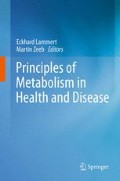Abstract
Migraine is a common primary episodic headache disorder. The most common migraine form is migraine without aura, with an estimated prevalence of 10–12 % in most Western societies. It is more frequent in women and usually starts before the age of 20, peaking between 35 and 45. In women, migraine often develops post menarche, worsens during menses, and may vanish during the last two trimesters of pregnancy or after menopause, suggesting an endocrine component to be involved. Two forms of migraine without aura are recognized: episodic (0–14 days per month with headache) and chronic (15 or more days per month with headache; Table 1). Usually, headache is unilateral, in the frontotemporal region, reaches its peak intensity gradually, is moderate to severe, is usually throbbing, and is aggravated by movements. It lasts 4–72 h (untreated or unsuccessfully treated) and can be associated with other symptoms, such as phonophobia, photophobia, nausea, and vomiting. Premonitory symptoms occur in 20–60 % of patients with migraines, hours to days before headache onset. They can include depression, fatigue, irritability, sensory sensitivity, anorexia/hunger, diarrhea/constipation, sensations of heat or cold, and sweating. In migraine with aura, focal neurological symptoms, mainly in the visual field, precede the headache and last about 15–30 min.
Access this chapter
Tax calculation will be finalised at checkout
Purchases are for personal use only
References
Headache Classification Committee of the International Headache Society (IHS) (2013) International Classification of Headache Disorders, 3rd edition (beta version). Cephalalgia 33:629–808
Tonon C, Guttmann S, Volpini M, Naccarato S, Cortelli P, D’Alessandro R (2002) Prevalence and incidence of cluster headache in the Republic of San Marino. Neurology 58:1407–1409
Leone M, Bussone G (2009) Pathophysiology of trigeminal autonomic cephalalgias. Lancet Neurol 8:755–764
May A, Goadsby PJ (1999) The trigeminovascular system in humans: pathophysiologic implications for primary headache syndromes of the neural influences on the cerebral circulation. J Cereb Blood Flow Metab 19:115–127
Evers S, Afra J, Frese A, Goadsby PJ, Linde M, May A, Sándor PS, European Federation of Neurological Societies (2009) EFNS guideline on the drug treatment of migraine – revised report of an EFNS task force. Eur J Neurol 16:968–981
May A, Leone M, Afra J, Linde M, Sándor PS, Evers S, Goadsby PJ, EFNS Task Force (2006) EFNS guidelines on the treatment of cluster headache and other trigeminal-autonomic cephalalgias. Eur J Neurol 13:1066–1077
Author information
Authors and Affiliations
Corresponding author
Editor information
Editors and Affiliations
Rights and permissions
Copyright information
© 2014 Springer-Verlag Wien
About this chapter
Cite this chapter
Leone, M., Di Fiore, P. (2014). Migraine and Cluster Headache. In: Lammert, E., Zeeb, M. (eds) Metabolism of Human Diseases. Springer, Vienna. https://doi.org/10.1007/978-3-7091-0715-7_8
Download citation
DOI: https://doi.org/10.1007/978-3-7091-0715-7_8
Published:
Publisher Name: Springer, Vienna
Print ISBN: 978-3-7091-0714-0
Online ISBN: 978-3-7091-0715-7
eBook Packages: Biomedical and Life SciencesBiomedical and Life Sciences (R0)

